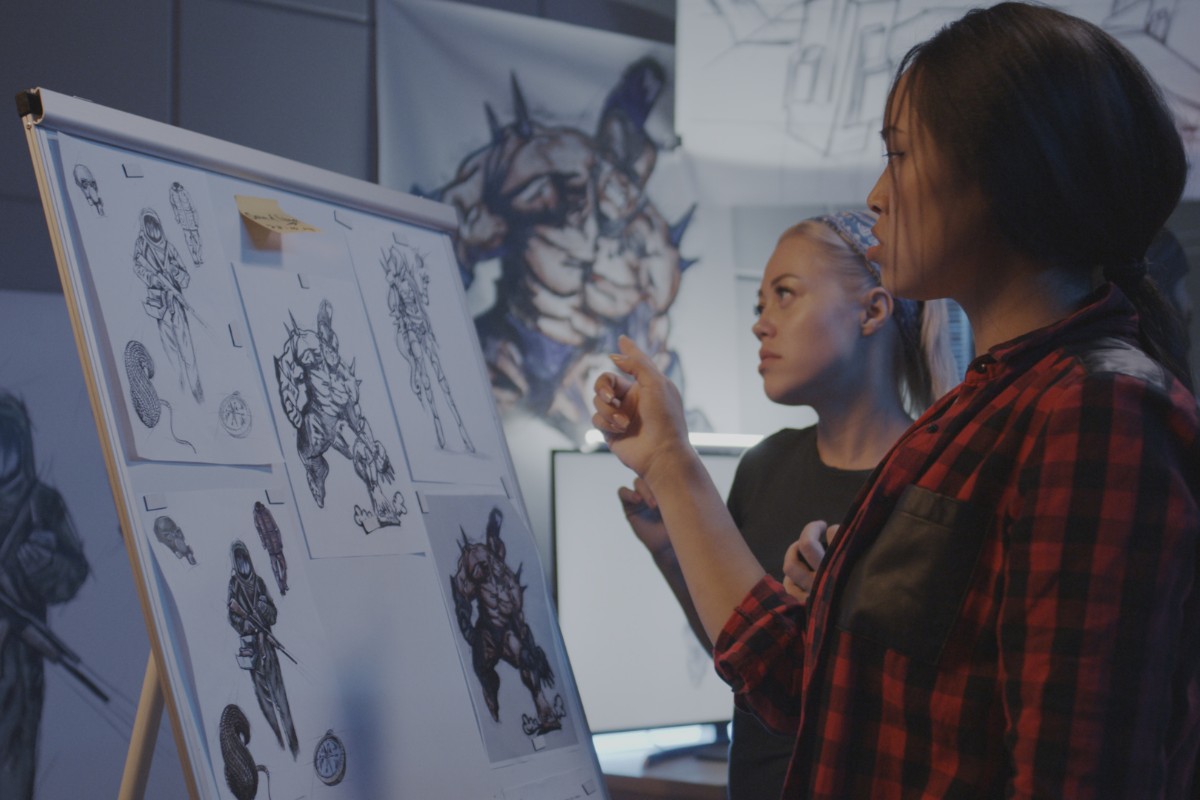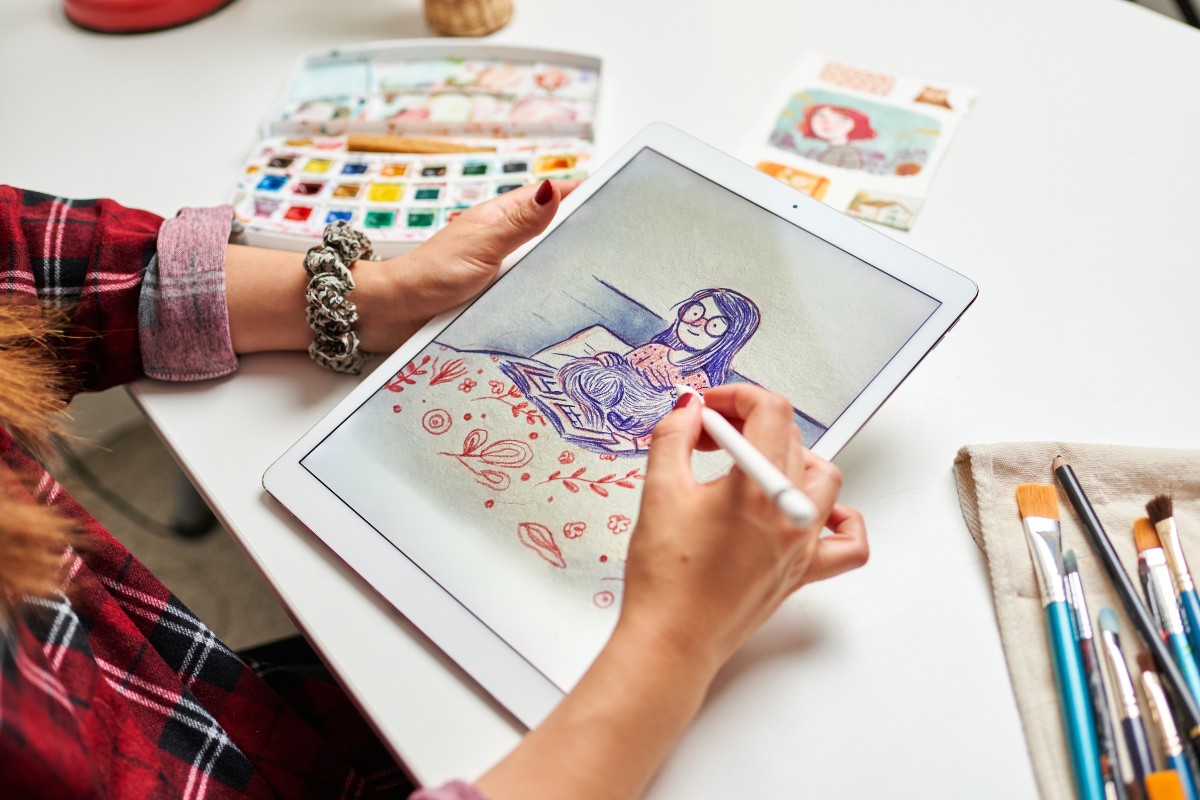If you’ve ever dreamt of becoming an illustrator, you’re in the right place.
In this article, we’ll explore the exciting path of how to become an illustrator, providing you with essential information and tips to get started.
Whether you’re an aspiring artist or simply looking to switch careers, this guide will help you navigate the art of illustration.
Post Contents
- 1 How To Become An Illustrator
- 2 Skills Required to Become an Illustrator:
- 3 Tools of the Trade for Illustrators
- 4 Frequently Asked Questions
- 5 Conclusion
How To Become An Illustrator

Illustration is a versatile art form encompassing many styles, from traditional hand-drawn illustrations to digital artwork.
It is used in various media, such as books, magazines, advertising, web design, and more.
Here are the key steps to becoming an illustrator:
1. Master the Basics
To become a top-notch illustrator, a solid foundation is your starting point.
Firstly, you must invest time in sketching and exploring various subjects daily.
The more you draw, the more your skills will improve.
You can study anatomy, perspective, and different art styles to expand your capabilities as time goes by.
Color plays a pivotal role in conveying emotions and messages through your artwork, so you need to learn about color theory, how colors interact, and their psychological effects.
Experiment with color combinations to create striking visuals.
Another fundamental basic to practice is composition.
It is the arrangement of elements within your artwork.
Study the rule of thirds, balance, focal points, and the use of negative space.
Effective composition can make your illustrations more engaging and visually appealing.
Practice is the cornerstone of mastering any craft, and that is why you need to set aside dedicated time for drawing, experimenting, and refining your techniques.
Create a habit of consistently challenging yourself to grow as an artist.
2. Choose Your Niche

Selecting the right niche is pivotal in defining your path as an illustrator.
Let’s explore this aspect in more detail:
Specialization in Character Design
Character design is a niche where you create unique and memorable characters for various media.
Dive deep into character development, personality traits, and storytelling through your character designs.
Exploring Children’s Book Illustrations
Children’s book illustration requires a delicate touch and the ability to tell a story through pictures.
Familiarize yourself with children’s literature and understand how to create graphics that resonate with young readers.
Concept Art for Video Games
Concept art for video games is a dynamic field that involves creating visuals that serve as the foundation for in-game environments, characters, and assets.
You can develop your skills in digital painting, 3D modeling, and game design concepts to excel in this niche.
3. Develop Your Style
Your unique artistic style sets you apart in a crowded field, so don’t be afraid to experiment with various techniques, mediums, and artistic influences.
Your style can evolve as you explore new horizons, combining the most resonating elements.
Your style should reflect your personality and artistic sensibilities.
Be true to yourself, as authenticity will make your work memorable and stand out in the competitive world of illustration.
4. Create a Portfolio
A strong portfolio is your showcase to the world, so it should consist of your absolute best work.
Choose pieces that highlight your range and skill.
Quality is more important than quantity, so you should showcase the diversity of your abilities.
Your portfolio can tell a story about your artistic journey, too.
Arrange your pieces thoughtfully to guide viewers through your development as an illustrator because this narrative can be a powerful tool in engaging potential clients and employers.
5. Network and Collaborate

Join Art Communities
Find online and offline art communities, forums, and social media groups to connect with fellow artists.
Share your work, receive feedback, and stay updated on industry trends and opportunities.
Attend Workshops and Conferences
Participate in art workshops, conventions, and conferences.
These events provide valuable learning experiences and offer the chance to meet industry professionals and fellow artists, potentially leading to collaborations and projects.
Collaboration as a Learning Opportunity
Collaborating with other artists on projects can be a fantastic learning experience.
You can gain fresh perspectives, learn new techniques, and expand your horizons while building your network.
6. Marketing Yourself as an Illustrator
After you’ve honed your skills and established your identity as an illustrator, it’s time to market yourself effectively to land jobs and attract customers.
Create a Professional Website
Having a professional website is not just a luxury; it’s a necessity for modern illustrators.
It’s your online portfolio, digital business card, and resume all rolled into one.
A well-designed website provides a platform to showcase your best work.
Use high-quality images that showcase your skills and style.
In addition to your portfolio, include a brief but engaging bio introducing yourself to potential clients and employers.
Make sure that your contact information is easily accessible so that interested parties can reach out to you effortlessly.
Social Media Presence
Social media has become an integral part of an illustrator’s promotional toolkit.
Platforms like Instagram, Twitter, and Pinterest offer a direct line to your audience.
Regularly share your work on these platforms, providing a glimpse into your artistic journey.
Engage with your followers by responding to comments, sharing insights about your creative process, and offering a peek behind the scenes.
Using relevant hashtags can significantly increase the visibility of your posts, making it easier for potential clients or fans to discover your work.
Content Creation
Creating content beyond your illustrations can establish you as an authority in your niche.
Blogging and vlogging are excellent avenues to share your knowledge and insights.
Write about your artistic process, techniques you’ve mastered, and experiences in the illustration world.
It not only helps you connect with your audience on a deeper level but also attracts a dedicated following of art enthusiasts and aspiring illustrators.
Your expertise can be a valuable resource for others, boosting your online presence by positioning you as a thought leader in your field.
SEO Optimization
SEO optimization is another vital tool to help your website and content stand out.
You need to optimize your website and content for relevant keywords to outrank competitors and gain visibility on search engines like Google.
This means conducting keyword research to identify phrases and terms that potential clients or fans might use to search for your services or content.
Incorporate these keywords into your website’s content, meta descriptions, and blog posts.
Regularly updating your website with valuable, keyword-rich content keeps it relevant and more likely to appear in search results.
Remember, SEO is an ongoing effort that requires consistency to see lasting results.
Skills Required to Become an Illustrator:
Illustration is a multifaceted profession that demands a diverse skill set.
To excel as an illustrator, you should cultivate the following abilities:
- Artistic Proficiency – Mastering drawing and painting techniques is fundamental.
- Digital Competence – proficiency with digital illustration tools and software, such as Adobe Illustrator and Procreate, is vital for versatility and efficiency.
- Creativity – Imagination and originality are at the core of illustration. The ability to generate unique, visually compelling ideas is a must.
- Adaptability – Be open to trying new styles, techniques, and tools to stay relevant.
- Communication Skills – As an illustrator, you often work with clients and collaborators. Clear communication is another integral part of understanding their vision and delivering on their expectations.
- Attention to Detail – The devil is in the details. Precision and attention to detail can elevate your illustrations from good to exceptional.
- Time Management – Effective time management ensures you complete projects on time without compromising quality.
- Marketing and Self-Promotion – You must promote your work, network, and build an online presence to find opportunities and attract clients.
Tools of the Trade for Illustrators

Here are some tools that every aspiring illustrator should consider:
Digital Drawing Tablets
Investing in a high-quality drawing tablet is crucial for digital illustration because it provides the precision and control needed to create your artwork effectively.
Software
Popular software choices for digital illustrators include Adobe Illustrator and Procreate.
These programs offer many tools and features to help you bring your creative ideas to life.
Traditional Supplies
Traditional tools like pencils, watercolors, and sketchbooks should not be underestimated.
They can be a valuable addition to your toolkit, allowing you to explore different techniques and textures in your artwork.
3D Modeling Software
Software like Blender and ZBrush is used by illustrators who want to explore 3D art.
These tools are essential for creating 3D models and scenes, which can be incorporated into 2D illustrations or used for entirely 3D compositions.
Scanners and Cameras
While this is advanced and not required, it is a plus.
Scanners and high-quality cameras help illustrators digitize their traditional artwork, capturing details and colors accurately.
Frequently Asked Questions
What credentials do I need to be an illustrator?
Formal skills are not required, but a fine arts or graphic design degree might be beneficial.
Your resume and talents are frequently more significant to clients and employers, so don’t be discouraged if you don’t want to go to school.
How can I make a memorable portfolio?
A strong portfolio highlights your most outstanding work, illustrates your style, and demonstrates your adaptability.
Include a range of articles that showcase your abilities.
Is it possible to become an artist without any training?
Yes, a large number of successful illustrators are self-taught.
Dedication, practice, and a love of illustrating are essential.
Where can I look for work as an illustrator?
Job openings can be obtained on freelancing sites such as Upwork, at design firms, or through networking.
Having a solid internet presence may also help you attract customers.
Conclusion
Becoming an illustrator or starting an illustration business is a rewarding journey that demands dedication and creativity.
By following these steps and continuously improving your skills, you can carve a successful career in illustration.
Knowing how to become an illustrator isn’t difficult; the hard part is getting started.






























